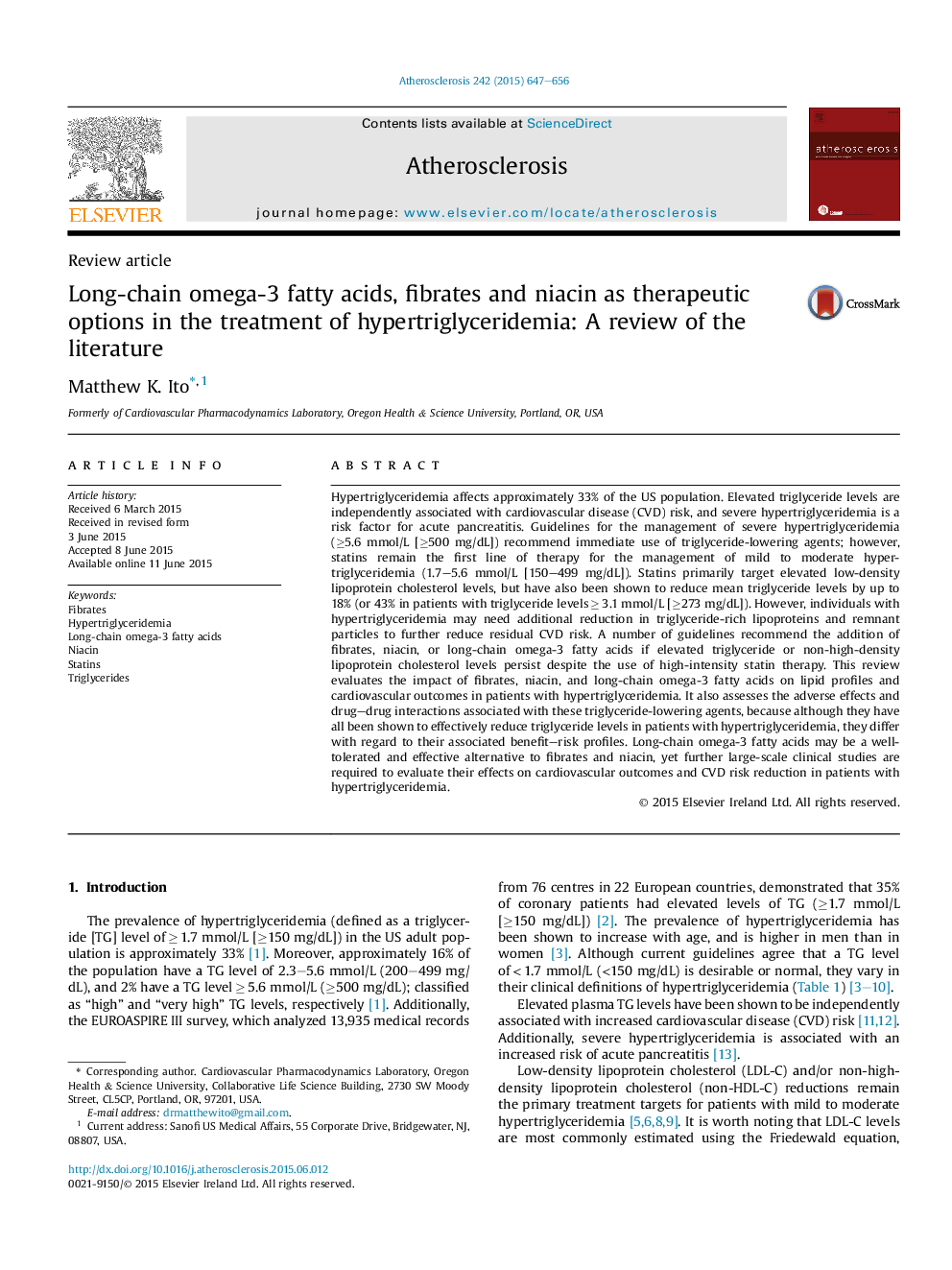| کد مقاله | کد نشریه | سال انتشار | مقاله انگلیسی | نسخه تمام متن |
|---|---|---|---|---|
| 5943807 | 1172339 | 2015 | 10 صفحه PDF | دانلود رایگان |
- Hypertriglyceridemia (HTG) affects approximately 33% of the US adult population.
- Guidelines differ in their clinical definitions of and recommendations for HTG.
- Guidelines recommend fibrates, niacin or long-chain omega-3 fatty acids (OM3FA).
- Available triglyceride-lowering agents differ in their benefit-risk profiles.
- OM3FA and fibrates appear to be well tolerated and effective treatments for HTG.
Hypertriglyceridemia affects approximately 33% of the US population. Elevated triglyceride levels are independently associated with cardiovascular disease (CVD) risk, and severe hypertriglyceridemia is a risk factor for acute pancreatitis. Guidelines for the management of severe hypertriglyceridemia (â¥5.6 mmol/L [â¥500 mg/dL]) recommend immediate use of triglyceride-lowering agents; however, statins remain the first line of therapy for the management of mild to moderate hypertriglyceridemia (1.7-5.6 mmol/L [150-499 mg/dL]). Statins primarily target elevated low-density lipoprotein cholesterol levels, but have also been shown to reduce mean triglyceride levels by up to 18% (or 43% in patients with triglyceride levels â¥Â 3.1 mmol/L [â¥273 mg/dL]). However, individuals with hypertriglyceridemia may need additional reduction in triglyceride-rich lipoproteins and remnant particles to further reduce residual CVD risk. A number of guidelines recommend the addition of fibrates, niacin, or long-chain omega-3 fatty acids if elevated triglyceride or non-high-density lipoprotein cholesterol levels persist despite the use of high-intensity statin therapy. This review evaluates the impact of fibrates, niacin, and long-chain omega-3 fatty acids on lipid profiles and cardiovascular outcomes in patients with hypertriglyceridemia. It also assesses the adverse effects and drug-drug interactions associated with these triglyceride-lowering agents, because although they have all been shown to effectively reduce triglyceride levels in patients with hypertriglyceridemia, they differ with regard to their associated benefit-risk profiles. Long-chain omega-3 fatty acids may be a well-tolerated and effective alternative to fibrates and niacin, yet further large-scale clinical studies are required to evaluate their effects on cardiovascular outcomes and CVD risk reduction in patients with hypertriglyceridemia.
Journal: Atherosclerosis - Volume 242, Issue 2, October 2015, Pages 647-656
